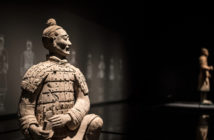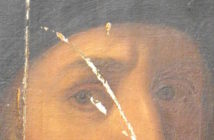Last month we told you about a new video art installation at 798 which has been captivating adults and kids alike. This week I took my family to see what all the fuss is about.
Because the exhibition is so popular, and the numbers allowed in strictly controlled, getting in isn’t simple, or cheap. You have to buy a ticket from a marquee around the corner from the entrance to Pace Beijing (only cash and WeChat are accepted, RMB 80 per person, RMB 150 at weekends, no discount for children):
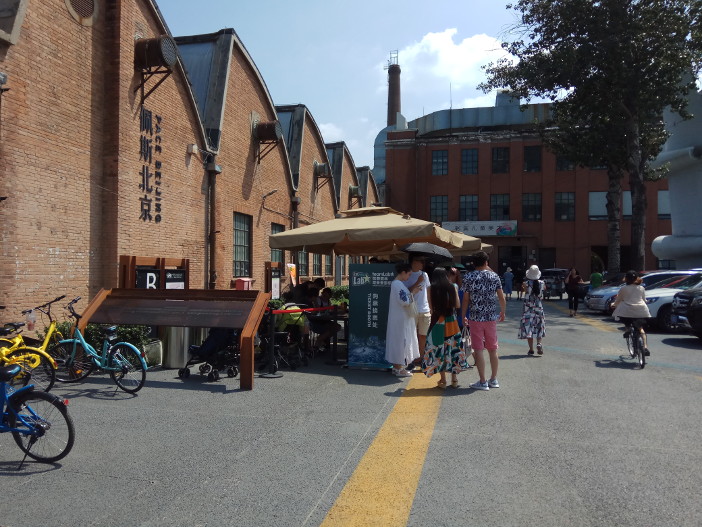
You’ll be given a paper receipt with a QR code, and also a WeChat app with a digital queue number. When it counts down to zero, it’s your turn to get in. Be careful though – we were told it could be an hour, so we went off to look at other galleries. By chance we checked the app after about 20 minutes, and saw that it was at zero. If we’d not spotted it, we might have missed our turn. You can understand why people were waiting outside, huddled under the shade of a canopy in the August heat.
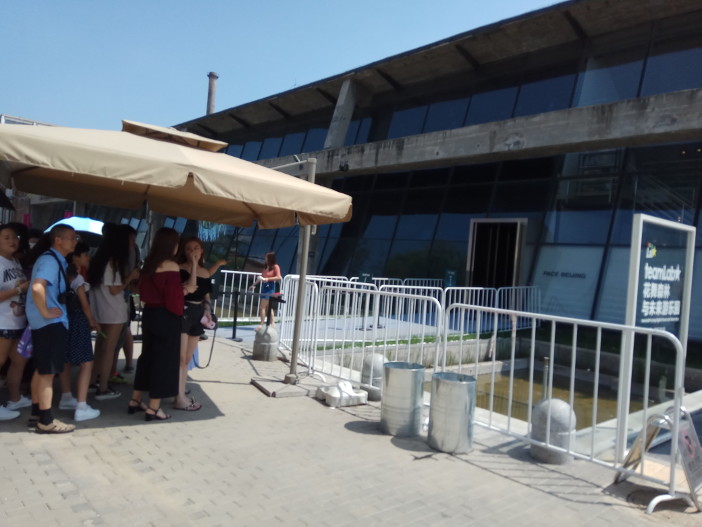
Once inside, all you have to do is check in your bags, go through security, present your paper receipt and exchange it for tickets, pass the tickets to the next person in line, have them torn and the stubs returned to you with your time of entry (this is important, as you will see), show your stub to the man on the door, and you’re in!
It may all seem a little complicated for an art exhibition, but it’s better than standing outside in a long queue under the blazing sun. And it was all very much worth it, because the Digital Forest is an awesome experience.
The main room is the Flower Forest, where floating projections, mirrors and ambient music make for a dizzying environment. My kids (who, as regular readers will know, are always initially resistant to enforced doses of culture) decided that this would be a great place to play hide and seek. Meanwhile my wife and I marveled at the flowers and colors unfolding, stroked the velvety walls, and to some extent relived the clubbing days of our youth.
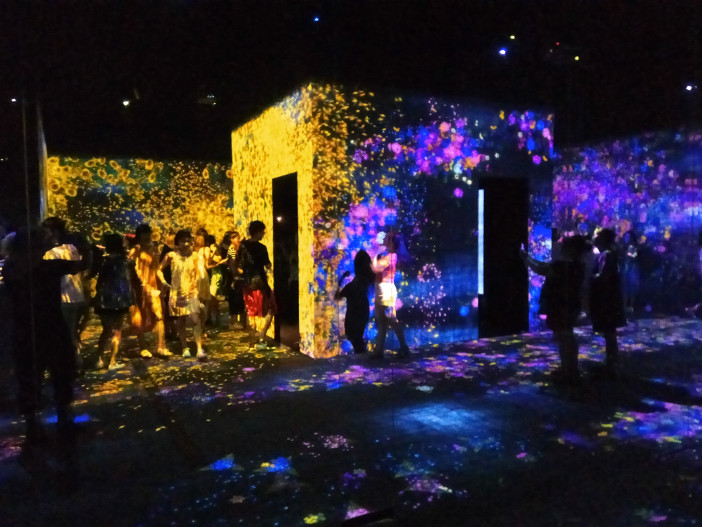
The other exhibits are concealed behind doorways and curtains within this labyrinth, so that you discover them by chance. Several make up the Floating Flower series, in which animals are formed from unfolding petals: the “Peony Peacock”, the “Chrysanthemum Tiger”, and so on. We stood for several minutes watching the shapes form and blow away again, in a beautiful and moving expression of the transience of life.
We met up with the kids again in the room housing our favorite work. “Crows are Chased and the Chasing Crows are Destined to be Chased as well, Transcending Space” is a breathtaking experience, to which my pictures do no justice and words can do little better. At the end of it Joseph said:
“It went past my eyes so fast I don’t know whether it really happened.”
So we watched it again.
“It was disorientating but amazing,” Noah said, begrudgingly accepting that this particular cultural adventure was worthy of his attention. But there was another cultural dimension to the exhibition which the artists may not have intended.
Most people there – and I do mean the majority – spent most of their time taking photographs of themselves and/ or their loved ones against the artworks. I saw mothers barking at their daughters, telling them how to pose, boyfriends taking pictures of their girlfriends as though they were modeling for a fashion magazine. It seemed an odd way to interact with the exhibition.

“Crystal Universe” was a dazzling display of hundreds of hanging strips of LED lights, surrounded by mirrors. By scanning a QR code at the entrance to the room you could access an app which allowed you to select your favorite star pattern, and with a flick of your finger send that pattern cascading through the lights like galactic fireworks.
However we were the only ones who were actually using the app. Everyone else was too focused on posing and snapping. It felt very odd to be surrounded by people snapping away, and occasionally uttering “oohs” and “aahs” when the pattern changed, and to be quietly, unnoticed, controlling it.
Future Town had a very different vibe, and would be more suitable for younger children. Here they can draw pictures and see those drawings brought to life, projected across the wall in huge towns and seascapes. Joseph and I found much hilarity in playing God over “A Table Where Little People Live”, messing with the lives of its digital gnome inhabitants, diverting their paths, showering them with rain or cupcakes.
However I nearly missed the fun, because we’d spent so long enjoying the other exhibits that an hour had passed since the time on my stub (remember the time on the stub?), and I was denied entry. I only got in by complaining vociferously and incomprehensibly in English until the bouncer on the door let me through to get rid of me.
The exhibition runs until October 10, and is well worth the price, and the hassle, of admission. But you’ll need to keep an eye on the clock, manage your time, and fight your way past hordes of selfie takers, to enjoy the wonders on offer.
Photos: Andrew Killeen


